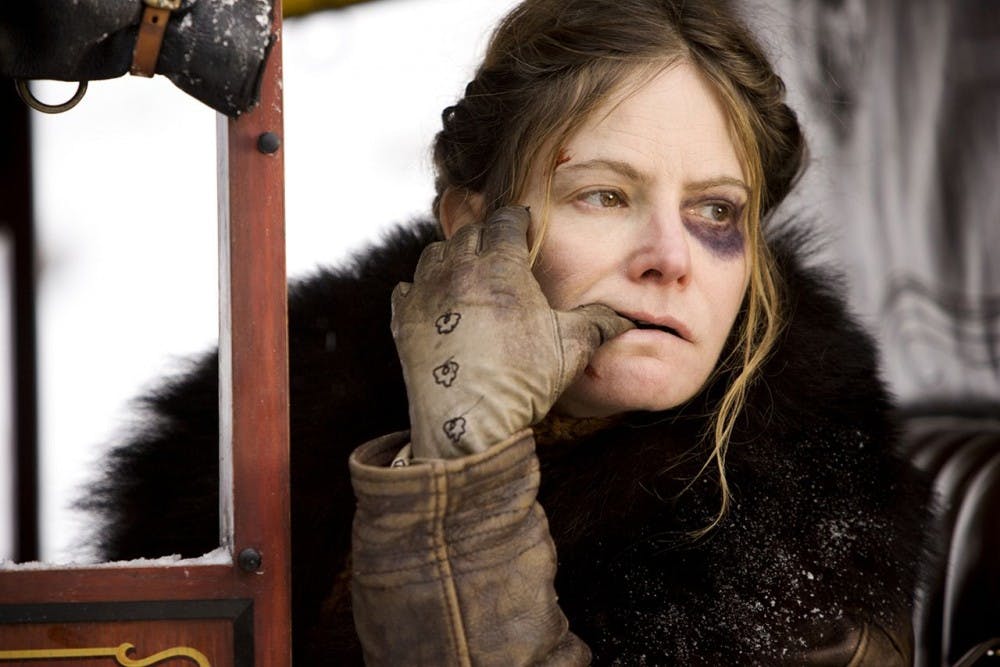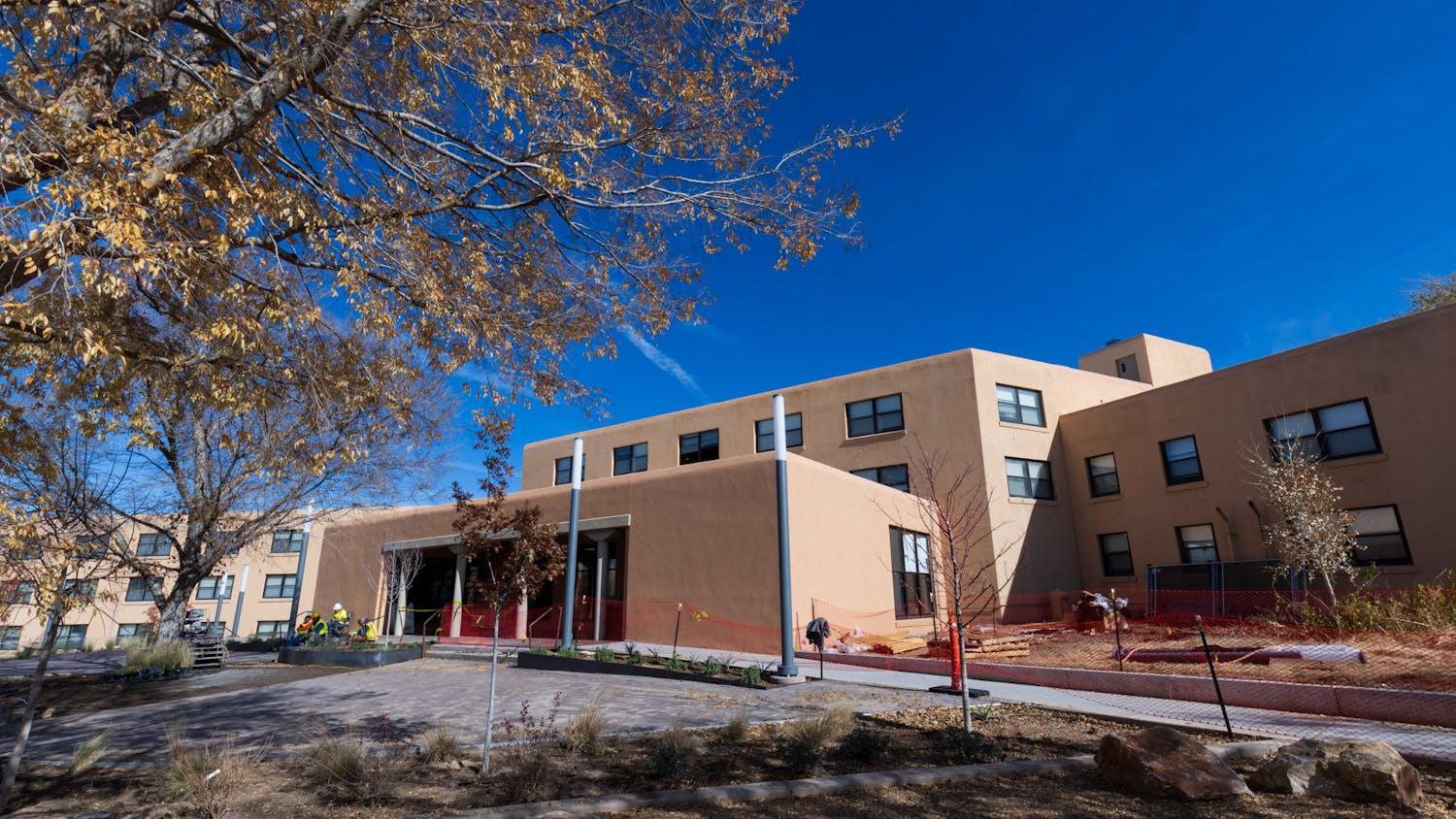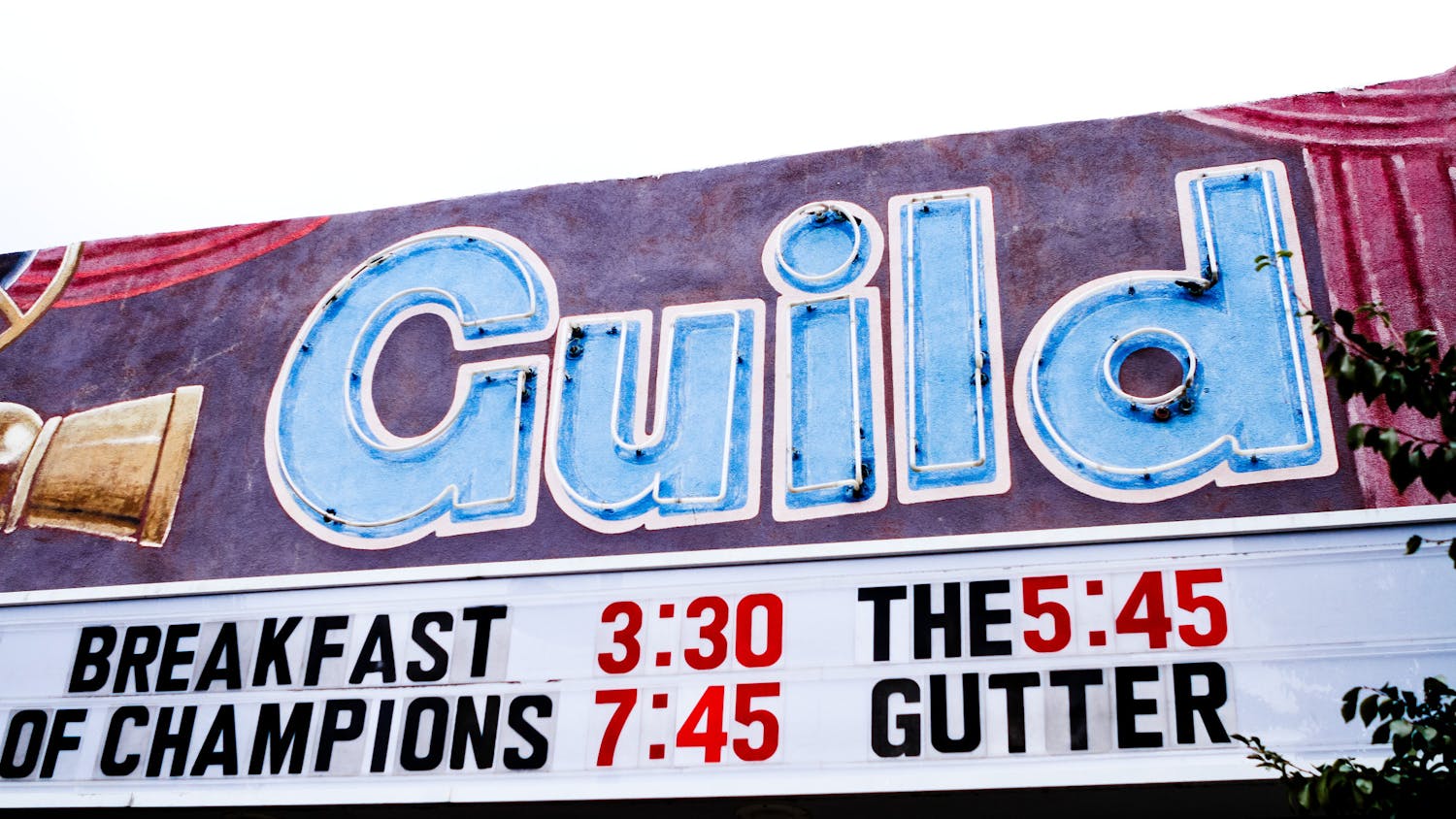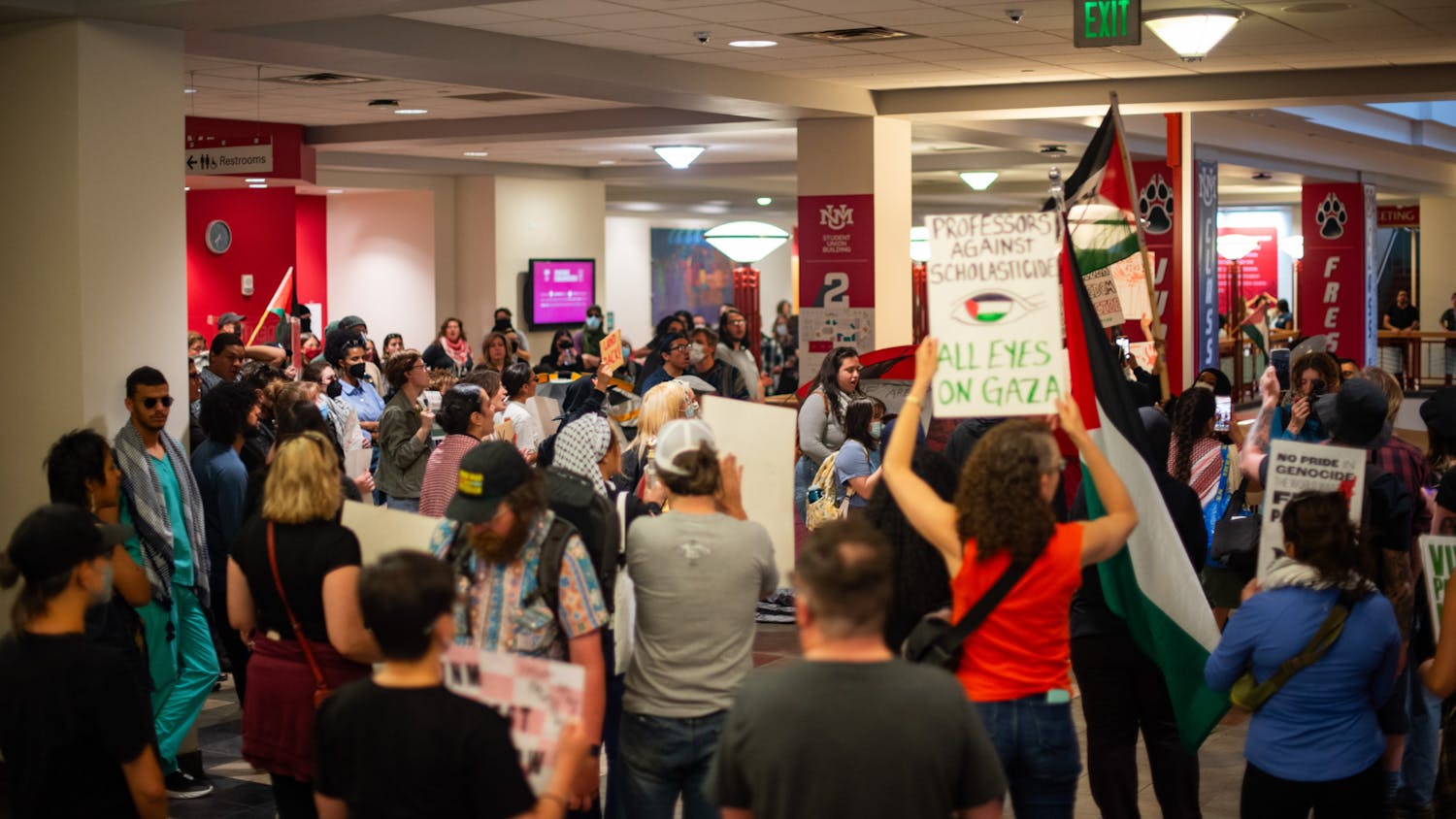Long after Quentin Tarantino’s career is said and done – no matter how polarized the debate over his impact on cinema – film nerds and students alike might very well turn to his latest picture, The Hateful Eight, as the one that is the most Tarantino-esque in his catalog.
That is to say, a gritty, consistently suspenseful, dialogue-drowned opus that blends multiple genres together in ways no one else can, and in a manner that is immensely satisfying, whether that satisfaction comes from bullets or from sheer filmmaking brawn.
Tarantino’s eighth feature begins with bounty hunter John Ruth, otherwise known as “The Hangman”, transporting the captured Daisy Domergue to Red Rock to collect his reward, but not before running into old acquaintances and being forced to stop for shelter along the way at Minnie’s Haberdashery due to a storm.
In typical Tarantino fashion, it takes a good 40 or so minutes to get to Minnie’s, where the real fun begins. Although the film isn’t shy about being vastly different from recent Tarantino flicks like Inglourious Basterds and Django Unchained, that doesn’t mean it’s any less entertaining, which is a testament both to Tarantino’s growth as a filmmaker and his ability to stay true to what he does best: bend the rules to his will.
The film is almost perfectly cast, another staple of Tarantino’s catalog. Each character truly is nefarious in their own way, giving the audience feelings of moral ambiguity and conflict the more they immerse themselves in the world. Each character certainly has a story to tell, and they all more or less get appropriate time to tell it.
Jennifer Jason Leigh puts in an Oscar-worthy performance as the devilish Domergue, Walton Goggins is consistently hilarious as Sheriff Chris Mannix, and Samuel L. Jackson delights, as always, in the biggest role he’s lent to Tarantino since Pulp Fiction.
Part of Tarantino’s mastery is his seemingly unnatural ability to blend genres so well and in a way that, no matter how over-the-top his movies get, it’s all still totally believable. He does that here to an extent never before displayed by him, and in his most dialogue-heavy film since Reservoir Dogs.
At times hard to endure, at times impossible to look away from, the film’s tension is always ramping up, up, up to the limits that only Tarantino dares to explore, making the audience simultaneously uncomfortable and entranced in the process.
While those introduced to Tarantino via Django or Basterds or even the Kill Bill saga might find the film a bit of a chore to watch, those who have been with him since the beginning know that, in many ways, this is him flexing his strongest muscles. The spectacle is substantially ramped down, but the writing is as sharp as ever, the suspense building ever so ostensibly with every monologue until the eventual bursting-of-the-top execution that Tarantino has made a staple in his works. All the while, the movie is also absolutely hilarious in ways that will make you feel guilty, like you’re one of the titular eight themselves.
Similarly, it’s a struggle to find a hero like, say, Django, because there simply isn’t one. No grand journey is undertaken, and the characters are as self-reliant as they are layered in morality, playing into Tarantino’s desire to destroy cinematic clichés and create his own. The result is decidedly bleaker than many of his more popular films, but just as powerful, like the blizzard that leads to the mayhem that The Hateful Eight results in.
Aiding the masterful script that will lock down Tarantino’s fourth Best Original Screenplay Academy Award nomination – and perhaps his third win – is the first Western score by master composer Ennio Morricone in 40 years, one that is so readily accessible and impactful in the film’s buildup that you wonder at times how this is Tarantino’s first time working with him.
Although it may at first seem a callback to Reservoir Dogs, The Hateful Eight’s boldness in the unorthodox by confining its cast, and the audience, to one setting for most of its almost two-and-a-half-hour runtime pays off in dividends only Tarantino can conjure up. Minnie’s Haberdashery is a battlefield, a chessboard even, in and of itself, with multiple parts and seemingly endless details that fit as much into the characters’ schemes as they themselves do.
Get content from The Daily Lobo delivered to your inbox
As Tarantino did with Django, The Hateful Eight also explores very relevant themes of racial hierarchy and justice through its subtleties, making early 2016 as appropriate a time as ever to discuss the issues as the post-Civil War period it’s set in. There are powerful messages that, when thought over after the credits roll, have the audience imagining similar scenarios and tensions playing out in modern society.
It does all lead to truly immense and satisfying payoffs, ones that include as many surprises as the buildup, in the form of flying bullets and brains and mixed motivations, lending the audience a sense of respect for letting Tarantino play around with the cinematic rules in ways that modern cinema rarely succeeds at, let alone attempts.
David Lynch is the managing editor at the Daily Lobo. He can be reached at managingeditor@daiylobo.com or on Twitter @RealDavidLynch.






